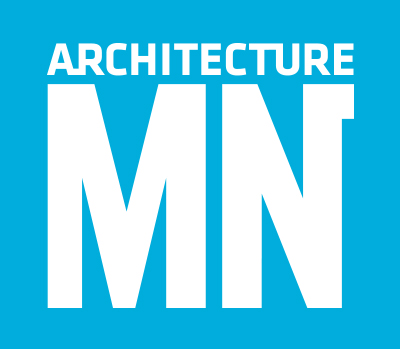The new venue stirs the public’s interest in architectural history and innovation with dynamic exhibits and programs for visitors of all ages. It’s one of a handful of models that AIA Minnesota is paying close attention to as it envisions its own center.
By Joel Hoekstra
For decades, Lynn Osmond, Hon. AIA, had been weighing the merits of a facility expansion. As president and CEO of the Chicago Architecture Foundation, she had seen the nonprofit’s tour offerings and educational programs grow significantly since her arrival in 1996, and space for the organization’s retail, programming, and administrative headquarters in the Railway Exchange Building on Michigan Avenue was increasingly tight. Additionally, Osmond and her board were envious of the architecture and design centers they saw popping up in New York, London, Paris, and Shanghai, as well as in smaller cities, including Seattle. “At some point, we knew we wanted to be our own center,” says Osmond.
In 2016, those dreams snapped into focus when the foundation learned its lease in the Railway Exchange Building would not be renewed. Osmond and the board of trustees decided to seize the moment and make the leap. “In just 18 months, we had to raise $12 million. We had to come up with architectural drawings. We had to come up with the exhibition plan,” Osmond recalls. “It was a very stressful year and a half.”
Last fall, Osmond and her team celebrated the opening of the Chicago Architecture Center, an elegant, two-story, architecture-and-design venue located just off Michigan Avenue on the Chicago River. The 20,000-square-foot facility houses exhibition space, a retail shop, a design studio, and a lecture hall. At its heart is an enormous model of downtown Chicago that helps tell the story of architecture and design in the Windy City—from the indigenous people who first inhabited the land to the famous fire that leveled the town to the postwar expansion that gave rise to its international renown—alongside displays on the 1893 Chicago World’s Fair, the destruction of predominantly African American neighborhoods in the 1950s and 1960s to make way for highways, and post-industrial development. A second gallery tells the story of the rise of the skyscraper—a building type invented in Chicago that’s now the hallmark of modern cities around the globe.
More than 30,000 people have already toured the center. Architecture critic Blair Kamin, writing in the Chicago Tribune, called it “the latest jewel in Chicago’s architectural crown.” But Osmond says that accolades from design experts are just icing on the cake. It’s everyday Chicagoans and tourists that she most wants to lure into the space: “We have a model that’s really based on public engagement,” she says.
LOCATION, LOCATION, LOCATION
Established in 1966, the Chicago Architecture Foundation—now called the Chicago Architecture Center—has no official link to the American Institute of Architects’ Chicago chapter. But the center’s ties to the city’s architecture community are many, and when Osmond and her board decided to forge ahead with an expansion, they turned to the design community for assistance.
Architect Gordon Gill, FAIA, was among the local talent asked to help with site evaluation. “The location was critical on a project like this,” says Gill. “It wasn’t a standalone building, so it had to be visible. It’s also a cultural project, so it had to be easily findable and accessible to the public.”
Of the five sites preselected for investigation by the foundation, Gill chose to study a ground-level space in 111 East Wacker Drive, a 1970 office tower designed by the studio of famed modernist Ludwig Mies van der Rohe. The location offered high visibility, close proximity to the boat launch where many of the organization’s tours began, and a central spot between two of the city’s biggest tourist destinations—Millennium Park and North Michigan Avenue. The site was also symbolic: “The river and Michigan Avenue are really the heartbeat of Chicago on any given day,” says Gill.
Osmond and her board agreed, and they tasked Gill, a principal at Adrian Smith + Gordon Gill Architecture, with designing the buildout. They also hired the museum planning firm Gallagher & Associates to advise them on exhibits and operations. That latter decision proved crucial, says Osmond. “Exhibit design is a science. It’s not about just doing something that looks pretty,” she explains. “If you want to charge admission, there’s certain testing that you have to do. We realized that if we wanted people to spend $12, we had to provide a certain kind of experience—something of a certain caliber, and something at least an hour long.”
Meanwhile, fundraising began in earnest. “It wasn’t a surprise to anyone that we had been contemplating this,” says Osmond. “Butpeople don’t give until you actually know the location and have a clear vision of what you intend to do. The bull’s-eye on the river made it real.”
REFLECTION AND ILLUMINATION
The new center occupies the ground floor and a former terrace space (now glassed in) at the base of 111 East Wacker. During the day, its glass exterior—marked with the Chicago Architecture Center logo, a red dot ringed by a white letter C—reflects the profiles of several iconic Chicago buildings, including the Tribune Tower and the Wrigley Building. At night, passersby on both sides of the river can see into the illuminated Drake Family Skyscraper Gallery on the upper level. Gill says the floor-to-ceiling glass gives visitors a chance to make both conscious and unconscious connections between the building models in front of them—including a nearly 40-foot-high likeness of Saudi Arabia’s Jeddah Tower, which, at 3,280 feet, will be the world’s tallest building when it opens in 2020—and the Chicago skyline. “It creates a subtle but intentional dialogue,” says Gill. “You’re looking at models of buildings from around the world, but Chicago is the backdrop.”
Smaller gallery spaces house rotating exhibits that examine issues like the effects of climate change and population growth on the built environment. Behind the scenes, a design studio accommodates K–12 classes and other learning activities. A 140-seat lecture hall in the back of the building provides space for guest lectures and presentations.
Osmond says staff members, most of whom office on a higher floor in the building, are still catching their breath after the opening. “All of a sudden, you’re open every day with paid gallery experiences,” she says. “You have to have visitor-experience guides, you have to have facilities. You’re running your box office and admissions. You’re learning how the visitor moves through the space.”
Still, all the growth and activity haven’t stopped Osmond from setting her sights on the future. “This fall, we’ll rotate out the models and make some exhibit changes,” she says. “We need to fundraise to get more digital interactive components both downstairs and upstairs. And we want to expand the portion of the Chicago City Model Experience that interacts with data so people can use the model in even more ways.” She then adds, with a smile: “I’m thrilled with what we have, but to be honest, I would like to have had about 3,000 more square feet of exhibit space.”
MADE IN MINNESOTA: AIA MINNESOTA AND THE MINNESOTA HISTORICAL SOCIETY TEAM UP TO EXPLORE OPTIONS FOR A MINNESOTA ARCHITECTURE CENTER
Minnesota boasts a number of iconic buildings, from the IDS Center in Minneapolis to the state capitol in St. Paul to Enger Tower in Duluth. But the stories of their design and construction—and of the political, social, and environmental forces that helped shape them—often go untold. A proposed architecture-and-design center could change that.
“We want to help the public better understand what architects and designers do,” says Meredith Hayes Gordon, AIA, an architect with HGA Architects and Engineers and one of the co-chairs of the AIA Minnesota task force examining the concept. Seattle, Boston, and New York are among the cities where AIA chapters have successfully launched such a venue.
The center, which could open as early as 2025, according to Hayes Gordon, is expected to be developed in partnership with the Minnesota Historical Society (MNHS). One potential location is within or adjacent to MNHS’s Mill City Museum in Minneapolis. Melanie Adams, deputy director of learning initiatives for MNHS, says she’s excited about the early conversations she’s had with AIA Minnesota. “They’re thinking big—how we can create a space that serves all of Minnesota,” she says.
The center would be a hub for K–12 educational programs, says AIA Minnesota executive vice president Mary-Margaret Zindren. It would also house exhibits on topics ranging from affordable housing to climate change and show how teams across sectors can work with the public to create spaces that are healthy, safe, beautiful, equitable, and sustainable. “Ultimately, we want people to see how the built environment shapes them,” says Zindren. “The more they understand about the design process, the more they can get involved and shape the outcome of what gets built and how.”
INSIDE STORIES: THIS SPRING, DOORS OPEN MINNEAPOLIS WILL INVITE TOUR-GOERS INSIDE NOTABLE BUILDINGS ACROSS THE CITY
Even before the Chicago Architecture Center opened its doors in September 2018, the organization drew tens of thousands of architecture enthusiasts to its annual Open House Chicago weekend, a free, citywide event that opens the doors of landmark buildings old and new. This past fall, the 279 participating sites included the Inland Steel Building, Illinois Institute of Technology’s Crown Hall, and the Poetry Foundation’s headquarters.
Soon, Minnesotans will enjoy a similar opportunity.
On May 18 and 19, Doors Open Minneapolis will make architecture the talk of the town. The free, self-guided tour, modeled in part on Open House Chicago and similar events in other cities, will allow the public to explore a variety of buildings of architectural, cultural, or social significance. The Federal Reserve, Orchestra Hall, the State Theatre, and Kramarczuk Sausage Company are among the buildings whose owners have volunteered to open their doors for the inaugural event. Sponsors, which include AIA Minneapolis, believe the list of venues will top 100 buildings.
“We think it’s a great way to deepen your knowledge of Minneapolis and to develop pride in the community,” says organizer Scott Mayer.
Potential tour sites include a police station, a mosque, collegiate buildings, churches, a government center, theaters, hotels, and a lock-and-dam facility. The full list of venues will be available in March at www.doorsopenminneapolis.org.


